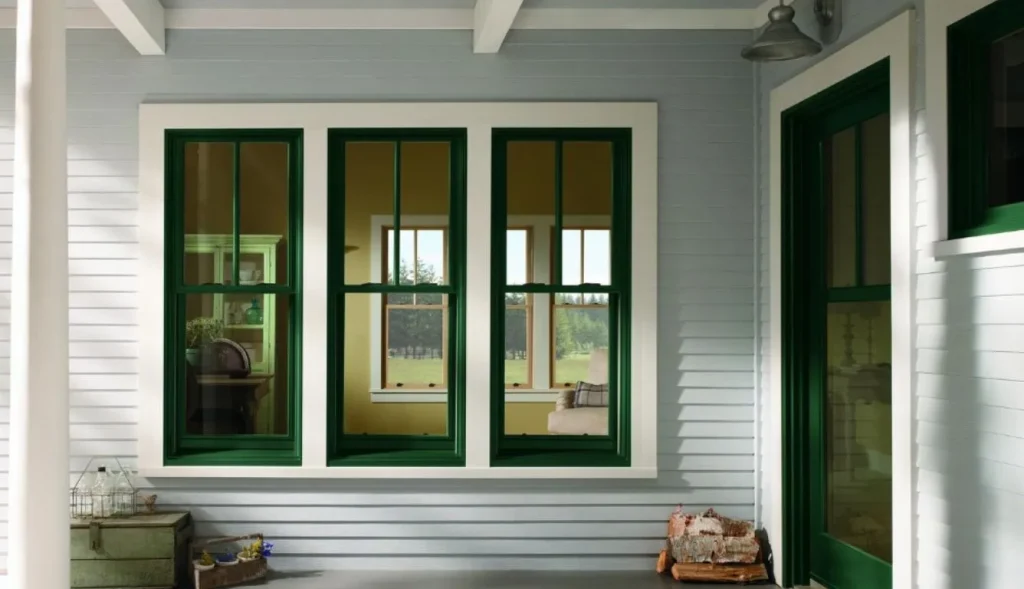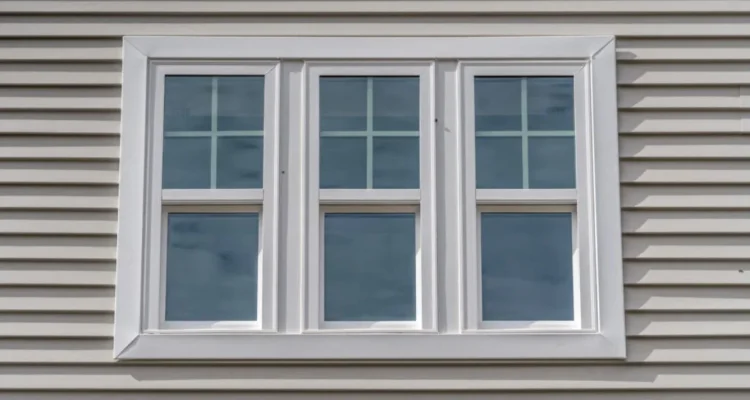Introduction
Ever wondered why windows seem to take such a big chunk out of your budget? You’re not alone. Whether you’re building a new home or upgrading your existing one, the cost of windows can be a bit shocking. But there’s a lot more to it than meets the eye. Windows are not just glass panes; they are complex components designed to perform multiple functions—protecting your home, insulating it, and adding to its aesthetic appeal. Let’s dive into why windows are so expensive and whether they’re worth the investment.

Why Are Windows So Expensive?
Windows play a crucial role in your home’s overall performance and comfort. The cost of windows can vary significantly, but several key factors contribute to their high price. These include the materials used, energy efficiency, customization options, and more. By understanding these factors, you can make an informed decision when it comes to purchasing windows for your home.
Material Costs
One of the primary reasons windows are so expensive is the cost of materials. High-quality materials are essential for ensuring that windows perform well and last a long time.
Quality of Glass
The glass in your windows is one of the most critical components. High-quality glass is not only more durable but also more effective at insulating your home. Options like tempered glass, laminated glass, and insulated glass units (IGUs) increase the cost but also enhance performance and safety.
Frame Materials
The type of material used for window frames also significantly impacts the cost. Different materials offer varying levels of durability, energy efficiency, and aesthetic appeal.
Wood Frames
Wood frames are traditional and offer excellent insulation. However, they are also among the most expensive due to the cost of the wood itself and the need for regular maintenance to prevent rot and warping.
Vinyl Frames
Vinyl is a popular choice because it’s affordable, low-maintenance, and energy-efficient. While less expensive than wood, high-quality vinyl frames can still add to the overall cost of the window.
Aluminum Frames
Aluminum frames are durable and strong, making them a good option for large windows. However, they are not as energy-efficient as other materials, which can make them more expensive in the long run due to higher energy bills.
Fiberglass Frames
Fiberglass frames are highly durable, low-maintenance, and offer excellent energy efficiency. They are more expensive than vinyl and aluminum but provide a longer lifespan and better performance.
Energy Efficiency
Energy efficiency is a significant factor in the cost of windows. Energy-efficient windows can help reduce your energy bills, but they often come with a higher upfront cost.
Double-Pane vs. Triple-Pane Glass
Double-pane windows are the standard for energy efficiency, but triple-pane windows offer even better insulation. The additional pane of glass and the gas fill between them make triple-pane windows more expensive, but they can lead to significant savings on heating and cooling costs over time.
Low-E Coatings
Low-emissivity (Low-E) coatings are thin layers applied to the glass that reflect heat while allowing light to pass through. These coatings improve energy efficiency but add to the cost of the windows.
Gas Fills Between Panes
The space between the panes of glass in double- or triple-pane windows is often filled with an inert gas like argon or krypton. These gases are denser than air, improving the window’s insulation properties and thus increasing the cost.
Customization and Aesthetics
Customization is another reason windows can be expensive. Standard sizes and designs are more affordable, but if you want something unique, you’ll pay a premium.
Custom Sizes and Shapes
Custom-sized windows or those with unique shapes can significantly increase costs due to the additional labor and materials required.
Decorative Glass Options
Decorative glass, such as stained or frosted glass, adds an aesthetic appeal but also increases the price. These options require more intricate manufacturing processes and materials.
Color and Finish Choices
Choosing a specific color or finish for your window frames can also add to the cost. While standard colors may be included in the base price, custom colors or finishes typically cost more.
Labor Costs
The cost of labor is another major factor in window pricing. Installing windows is a skilled job that requires precision and experience.
Installation Complexity
If your windows are challenging to install due to their size, shape, or location, labor costs will be higher. Complex installations require more time and expertise, driving up the overall cost.
Skilled Labor Requirements
Hiring skilled labor ensures that your windows are installed correctly, which is crucial for their performance and longevity. However, skilled labor comes at a premium, contributing to the overall expense.
Brand and Manufacturer Influence
The brand and manufacturer you choose can also affect the price of your windows. High-end brands often come with higher prices, but they may offer better quality and warranties.
High-End vs. Budget Brands
High-end brands often use superior materials and offer more customization options, but they come with a higher price tag. Budget brands may offer more affordable options but might compromise on quality or features.
Warranty and Service Inclusions
Some brands offer extended warranties and additional services, such as professional installation or repair services. These add-ons can increase the overall cost but provide peace of mind and long-term value.
Geographical Factors
Where you live can also impact the cost of windows. Prices can vary based on local labor rates, material availability, and building codes.
Regional Price Variations
The cost of living in your area can affect labor and material costs, making windows more expensive in some regions compared to others.
H3: Impact of Local Building Codes
Local building codes may require specific types of windows, such as those with higher wind resistance in hurricane-prone areas. Meeting these requirements can add to the cost of your windows.
Economic Factors
Global and local economic conditions can also influence window prices. Supply chain disruptions, material shortages, and fluctuating market demand can all play a role.
Supply Chain Issues
Disruptions in the supply chain, such as delays in material delivery or increased transportation costs, can drive up the price of windows.
Market Demand
High demand for certain types of windows or materials can increase prices, especially during peak construction seasons.
Longevity and Durability
While expensive, high-quality windows are an investment in your home’s future. They are designed to last longer and require less maintenance.
Long-Term Investment
Investing in durable, high-quality windows can save you money in the long run by reducing maintenance costs and extending the life of your windows.
Maintenance Costs
Cheaper windows might save you money upfront, but they often require more maintenance, which can add to the cost over time.
Environmental Considerations
Eco-friendly windows made from sustainable materials or manufactured using environmentally responsible processes can be more expensive.
Sustainable Materials
Windows made from recycled or sustainably sourced materials may cost more due to the higher production costs associated with these materials.
Eco-Friendly Manufacturing Processes
Manufacturers that use eco-friendly processes often charge more for their products, reflecting the additional costs of reducing their environmental impact.
Security Features
Security is another factor that can drive up the cost of windows. Windows designed with enhanced security features are often more expensive.
Impact-Resistant Glass
Impact-resistant glass is designed to withstand forceful impacts, making it a popular choice in areas prone to severe weather or break-ins. However, it is more expensive than standard glass.
Reinforced Frames
Frames that are reinforced for added security, such as those with metal cores, will also cost more than standard frames.
Smart Technology Integration
Modern windows can be equipped with smart technology, allowing them to adjust automatically to changing conditions. These features add convenience and energy savings but at a higher cost.
Smart Glass Technology
Smart glass can change its tint based on the amount of sunlight, helping to regulate indoor temperatures. While this technology is innovative, it is also pricey.
Automated Window Systems
Automated windows that can be controlled via smartphone or smart home systems are convenient but add to the overall cost due to the complexity of the technology.
Future Trends in Window Pricing
As technology and consumer preferences evolve, so do the factors that influence window pricing. Staying informed about these trends can help you make a smart investment.
Innovations in Materials
New materials that offer better insulation, durability, or sustainability are being developed, and while they may be expensive now, they could become more affordable as they become more common.
Changing Consumer Preferences
Consumer demand for eco-friendly, smart, and custom windows is increasing, and as manufacturers respond to these trends, prices may fluctuate.
FAQs
1. Why do custom windows cost more?
Custom windows require additional labor and materials, leading to higher costs compared to standard-sized windows.
2. Are energy-efficient windows worth the extra cost?
Yes, energy-efficient windows can reduce heating and cooling costs, making them a good long-term investment.
3. How does the choice of frame material impact the price?
Frame materials like wood and fiberglass are more expensive due to their durability and insulation properties, while vinyl and aluminum are more affordable but may offer less energy efficiency.
4. Can DIY window installation save money?
DIY installation can save on labor costs, but improper installation can lead to problems, potentially costing more in the long run.
5. What are the most cost-effective types of windows?
Vinyl windows are generally the most cost-effective, offering a good balance of affordability, energy efficiency, and low maintenance.
Conclusion
Windows are a significant investment, but understanding the factors that contribute to their cost can help you make an informed decision. From materials and energy efficiency to labor and brand influence, many aspects affect the price of windows. While they may seem expensive, the right windows can enhance your home’s comfort, security, and energy efficiency, making them a worthwhile investment in the long run.


Congratulation!